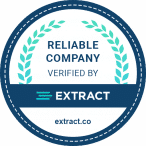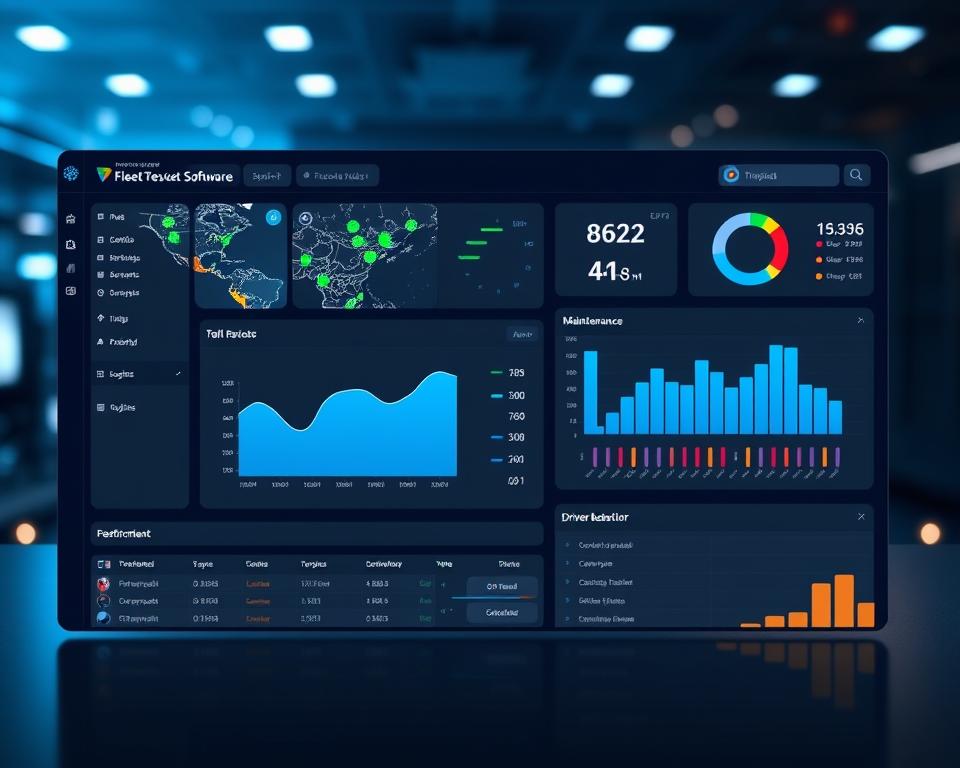Fleet management solutions are key for companies that use transportation. Knowing the cost of developing this software is vital. The price can change a lot, based on how complex it is, the tech used, and the team’s experience. Companies need to think about these things to find a solution that fits their budget and needs.
Creating fleet management software is a big investment. Companies must think about the costs and what they get in return. By knowing what affects the cost, companies can make smart choices. The cost includes design, making the software, testing, and putting it out there. All these parts add up to the total cost.
When making fleet management software, companies should think about the long-term costs too. This includes keeping the software up-to-date, getting help when needed, and keeping it safe. Knowing all these costs helps companies make software that works well and doesn’t break the bank.
Table of Contents
Key Takeaways
- Understanding software development costs is crucial for businesses that rely on fleet management solutions.
- The cost of developing fleet management software varies widely, depending on several factors.
- Businesses must consider the total cost of ownership, including maintenance and support costs.
- Effective fleet management solutions require a significant investment in design, development, testing, and deployment.
- Regular updates, technical support, and security maintenance are essential for ensuring the software remains effective and secure.
- Businesses must weigh the costs against the potential benefits of developing fleet management software.
Understanding Fleet Management Software Development
Fleet management software is key for companies that use vehicles. It includes GPS tracking, vehicle maintenance, fuel management, and driver management. These parts help companies see their fleet operations clearly, making better decisions and improving efficiency.
The main features of fleet management software are real-time tracking, automated reports, and alerts for maintenance and fuel. These features help companies save money, make customers happier, and work more efficiently. Using this software, businesses can run smoother, cut down on paperwork, and grow.
- Improved vehicle utilization and reduced idle time
- Enhanced customer satisfaction through real-time tracking and updates
- Increased productivity and reduced administrative burdens
- Better maintenance management and reduced downtime
Understanding fleet management software’s key parts and main features helps companies make smart choices. Whether you’re small or big, this software can make your operations better, save money, and help you grow.
| Feature | Benefit |
|---|---|
| GPS Tracking | Real-time location tracking and monitoring |
| Vehicle Maintenance | Automated maintenance scheduling and reminders |
| Fuel Management | Real-time fuel level monitoring and alerts |
Factors Influencing Development Costs
Several influencing factors can affect the cost of developing fleet management software. It’s important for businesses to understand these factors to plan their budget well. The complexity of the solution, the technology used, and the team’s experience are key factors.
The complexity of the solution greatly impacts the time and resources needed. A more complex solution means more development time and higher costs. The technology stack also plays a role, with different technologies having different costs. For instance, proprietary technologies can be pricier than open-source ones.
Other factors include the team’s experience, team size, and location. More experienced teams charge more but deliver better work. Team size affects costs, as a bigger team needs more resources. The team’s location also matters, as costs vary based on where they are.
- Complexity of the solution
- Technology stack used
- Experience level of the development team
- Size and location of the development team
Understanding these factors helps businesses estimate costs better. It’s crucial to consider them when planning and budgeting for a project. This ensures the project’s success and avoids unexpected expenses.
| Factor | Description | Impact on Development Costs |
|---|---|---|
| Complexity of the solution | Directly affects development time and resources | Higher complexity = higher development costs |
| Technology stack used | Different technologies have varying costs | Proprietary technology stacks can be more expensive |
| Experience level of the development team | Affects the quality and efficiency of the development process | More experienced teams may charge higher rates |
Essential Features and Their Cost Impact
When making fleet management software, it’s key to think about the must-have features. These include GPS tracking for real-time vehicle location monitoring and vehicle maintenance tracking to avoid breakdowns and cut repair costs.
The price of these features changes based on the system’s complexity and the tech used. For instance, GPS tracking can be simple or advanced. The advanced type gives more precise location info and extra features like geofencing.
Key Features and Their Costs
- GPS tracking: $500 – $2,000
- Vehicle maintenance monitoring: $1,000 – $5,000
- Fuel management systems: $2,000 – $10,000
- Driver management features: $1,500 – $7,000
These prices are just estimates and can change based on the software’s specific needs. It’s vital to team up with a development group to figure out the exact costs. This way, the software will meet the fleet management company’s needs.
| Feature | Cost | Description |
|---|---|---|
| GPS Tracking | $500 – $2,000 | Real-time monitoring of vehicle locations |
| Vehicle Maintenance Monitoring | $1,000 – $5,000 | Preventive maintenance and repair cost reduction |
| Fuel Management Systems | $2,000 – $10,000 | Fuel consumption monitoring and optimization |
| Driver Management Features | $1,500 – $7,000 | Driver behavior monitoring and performance evaluation |
Technology Stack Selection and Costs
Choosing the right technology stack is key when making fleet management software. The costs of different stacks can vary a lot. It’s important to think about these costs when deciding.
A good technology stack can save time and money. But a bad choice can increase selection costs and cause delays. Popular options include cloud-based platforms, mobile apps, and web applications.
Here are important things to think about when picking a technology stack:
- Scalability and flexibility
- Integration with existing systems
- Security and reliability
- Development time and costs
By looking at these factors and the technology stack and selection costs, businesses can make a smart choice. This choice should fit their needs and budget.
The secret to great fleet management software is finding a balance. Look for a stack that’s functional, scalable, and affordable. Also, think about the selection costs and long-term gains.
Development Team Structure and Rates
Creating fleet management software needs a well-organized development team. The team’s setup and team structure greatly affect the project’s cost. A typical team includes project managers, software developers, quality assurance engineers, and designers.
The rates for these roles vary. This depends on where they are, their experience, and their skills. For example, developers in the U.S. or Europe often charge more than those in Asia or Latin America. Also, experts in GPS tracking or fuel management systems get paid more than beginners.
- Know what your project needs to figure out who to hire and their roles.
- Think about outsourcing or hiring freelancers to save money.
- Choose developers with fleet management experience to cut down on training time.
By planning the team structure well and considering location and experience, companies can create a skilled and affordable development team. This team can help build the fleet management software needed.
How Much Does It Cost to Develop Fleet Management Software: A Detailed Breakdown
To understand the costs of developing fleet management software, we need to look at different parts. A detailed breakdown helps you plan your budget better.
There are three main areas: development, implementation, and maintenance. Development costs cover design, development, and testing. Implementation costs are for deploying the software. Maintenance costs are for updates, support, and security.
Several factors affect the development costs. These include the technology used, the team’s structure, and the features needed. For example, a basic software with GPS and vehicle maintenance tracking costs less than one with advanced features like fuel management and driver management.
A detailed breakdown helps you find ways to save money without lowering software quality. Knowing the costs helps you make smart choices and stay on budget.
Here are some ways to cut costs:
- Choosing the right technology stack
- Selecting a suitable team structure
- Prioritizing features based on business needs
By considering these factors and making a detailed breakdown of costs, you can finish your fleet management software project on time and within budget. It will also meet your business needs.
Customization Options and Associated Costs
Customization options are key in fleet management software. They help meet a business’s unique needs. The costs can vary a lot, based on how complex the needs are and the technology used. Businesses need to weigh their customization needs against the costs to get the best value.
Customization is crucial in areas like industry-specific requirements. This includes following regulations or fitting with current systems. These costs can be high but are often needed for the software to work well. Other important areas include integration capabilities and scalability features, which also affect the software’s cost.
- Complexity of the requirements
- Technology used
- Integration with existing systems
- Scalability features
Knowing these factors helps businesses make smart choices about customization. This ensures they get the most from their fleet management software.
Implementation and Deployment Expenses
Choosing fleet management software can quickly lead to high implementation expenses. These costs cover training, support, and maintenance. It’s vital to budget for these deployment costs for a smooth setup.
Training costs are a big part of these expenses. This includes on-site training, online tutorials, and ongoing support. The price depends on the software’s complexity and the number of staff to train. Also, deployment costs include the hardware and infrastructure needed for the software.
- Training and support costs
- Hardware and infrastructure costs
- Ongoing maintenance and support costs
- Customization and integration costs
Understanding these costs helps businesses plan for a successful software implementation. This way, they can avoid high implementation expenses. It’s also key to see the long-term benefits, like better efficiency and cost savings, to make sure the deployment costs are worth it.
| Cost Category | Estimated Cost |
|---|---|
| Training and Support | $5,000 – $10,000 |
| Hardware and Infrastructure | $10,000 – $20,000 |
| Ongoing Maintenance and Support | $2,000 – $5,000 per year |
Maintenance and Support Costs
After setting up fleet management software, ongoing costs are key. These include updates, technical support, and security upkeep. These expenses help keep the software running smoothly.
Keeping the software updated is crucial for security and function. Technical support services help fix issues quickly. This reduces downtime and saves money. Security maintenance protects against threats.
Important costs to consider are:
- Software updates and patches
- Technical support services
- Security maintenance and monitoring
- Data backup and recovery
Setting aside funds for these costs ensures your software stays reliable. This helps avoid disruptions to your business.
| Maintenance Task | Frequency | Cost |
|---|---|---|
| Software updates and patches | Quarterly | $1,000 |
| Technical support services | Monthly | $500 |
| Security maintenance and monitoring | Annually | $2,000 |
Return on Investment Considerations
When looking at the cost of fleet management software, it’s key to think about the return on investment. Weigh the costs against the benefits like better efficiency, less fuel use, and better vehicle care. Return on investment is crucial in deciding if a fleet management software project is worth it.
Some important considerations for return on investment include:
- Cost savings: How much can the software cut fuel costs, maintenance, and vehicle downtime?
- Revenue increases: Can the software boost revenue by better routes, faster deliveries, and happier customers?
- Productivity gains: How does the software make fleet operations smoother, cut down on paperwork, and boost driver performance?
To figure out the return on investment, fleet managers can look at different metrics, such as:
| Metric | Description |
|---|---|
| Return on Investment (ROI) | The ratio of net gain to total investment |
| Payback Period | The time it takes for the investment to generate a return |
| Net Present Value (NPV) | The present value of expected future cash flows |
By carefully looking at these metrics and thinking about the return on investment, fleet managers can make smart choices about investing in fleet management software.
Timeline and Cost Correlation
When making fleet management software, knowing the timeline and cost is key. The process has many phases, each with its own costs and times. It’s vital to plan well to finish the project successfully.
The development phases include gathering needs, designing, coding, testing, and deploying. Each step has its costs. Knowing these helps make a realistic budget. This way, businesses can keep costs in check.
Using milestone-based payments helps manage costs and keeps projects on schedule. Payments are made at key points, like when design is done or the software is deployed. This method ensures the project stays on track and costs are controlled.
Here’s a sample timeline and cost breakdown for fleet management software development:
| Development Phase | Timeline | Cost |
|---|---|---|
| Requirements Gathering | 2 weeks | $10,000 |
| Design | 4 weeks | $20,000 |
| Development | 12 weeks | $60,000 |
| Testing | 4 weeks | $15,000 |
| Deployment | 2 weeks | $10,000 |
Hidden Costs and Additional Expenses
When making fleet management software, it’s key to watch out for hidden costs. These additional expenses might pop up due to delays, changes, or tech problems. It’s smart to spot these costs early and find ways to lessen their effect.
Some common hidden costs in fleet management software include:
- Costs of integrating with existing systems
- Expenses related to data migration and storage
- Fees for third-party APIs and services
To avoid additional expenses, knowing the development process well is crucial. Plan for risks and challenges ahead of time. This helps manage your budget better.
| Hidden Cost | Description |
|---|---|
| Delays in development | Costs associated with delayed timelines and extended development periods |
| Changes in requirements | Expenses related to revising and updating software specifications |
| Technical issues | Costs of resolving unforeseen technical problems and bugs |
By knowing and planning for hidden costs and additional expenses, businesses can keep their budgets in check. This ensures their fleet management software is developed successfully.
Cost Optimization Strategies
Creating fleet management software can be expensive. But, there are ways to cut costs without losing quality or function. One method is to use cost optimization strategies. These focus on the most important features and development phases.
Using strategies like agile development and iterative testing can lower costs. It also makes the software more efficient. Thinking about a minimum viable product (MVP) can help launch the software fast. It also gets feedback from users.
MVP Approach Benefits
- Reduced upfront costs
- Faster time-to-market
- Improved user feedback and testing
Phased Development Options
Phased development breaks the process into smaller parts. This lets companies focus on key features and use resources wisely. It helps optimize costs and makes sure the software meets business needs as they change.
Conclusion
Creating fleet management software is a big task. It needs the right tech, a good team, and options for customizing. Knowing these things helps figure out the costs. This article has covered the costs of making fleet management software, including key features, tech, and upkeep.
In summary, how much it costs to make fleet management software changes a lot. Businesses can make smart choices by looking at the points in this article. This helps them find a solution that fits their budget and needs. It’s important to think about the benefits, like saving money and making customers happier.
Investing in good fleet management software can help businesses run better. It can make them more profitable and keep them ahead in the market. As the transportation world keeps changing, the need for good fleet management tools will grow. This makes it a great time for companies to look into this technology.



















